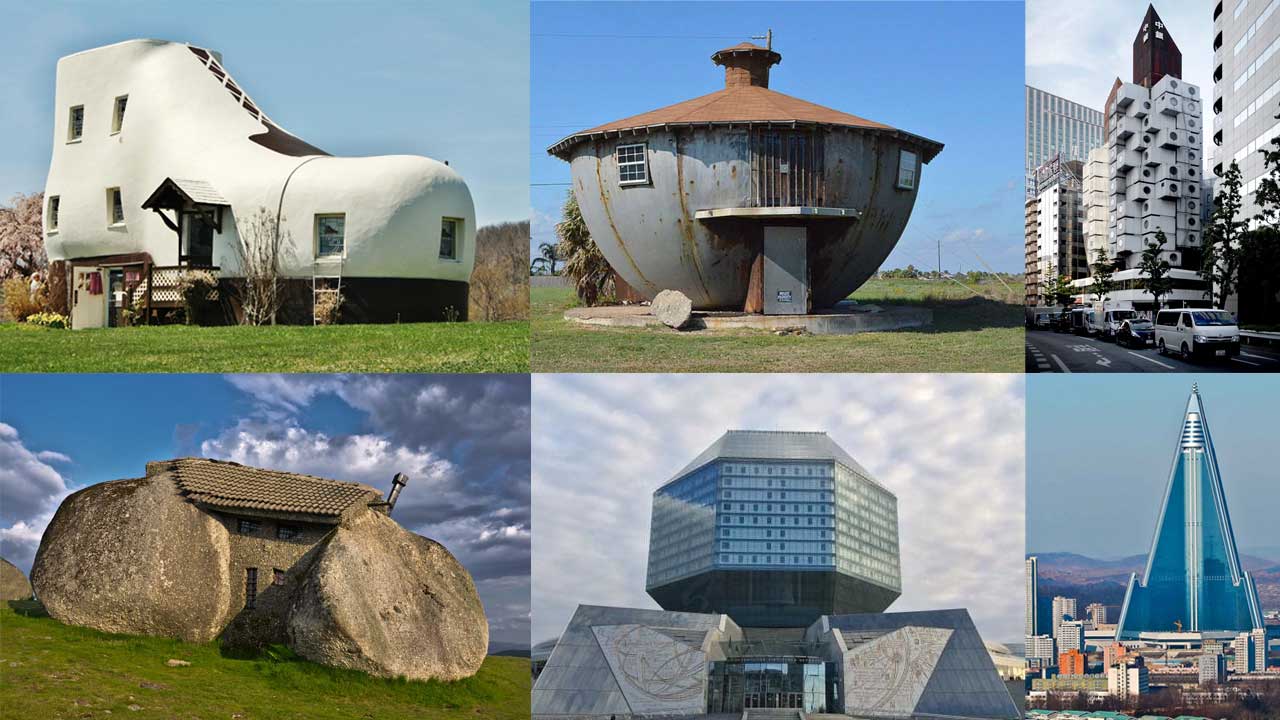
55 Amazing Architectures of the World –Volume 1
1. The Crooked House
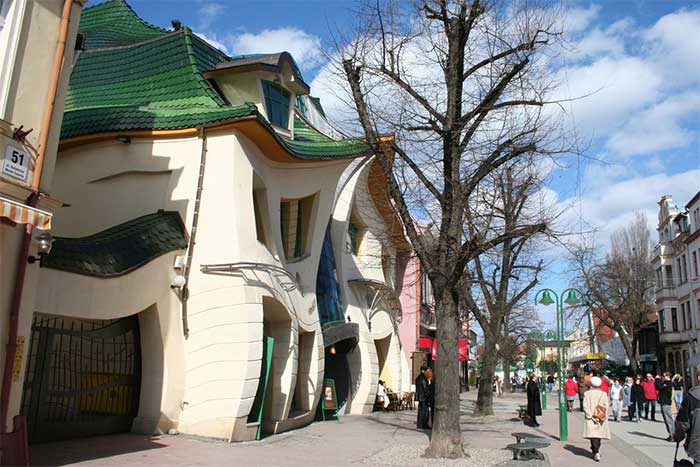
The Crooked House located in Sopot, Poland is an architectural wonder, tourist attraction and that intrigues experts for its peculiar construction. Designed by the Polish architects Szotynscy and Zaleski, who were inspired to design this odd building after studying the artwork of Per Gahlberg and the fairytale illustrations of Jan Szancer.
2. Forest Spiral - Hundertwasser Building
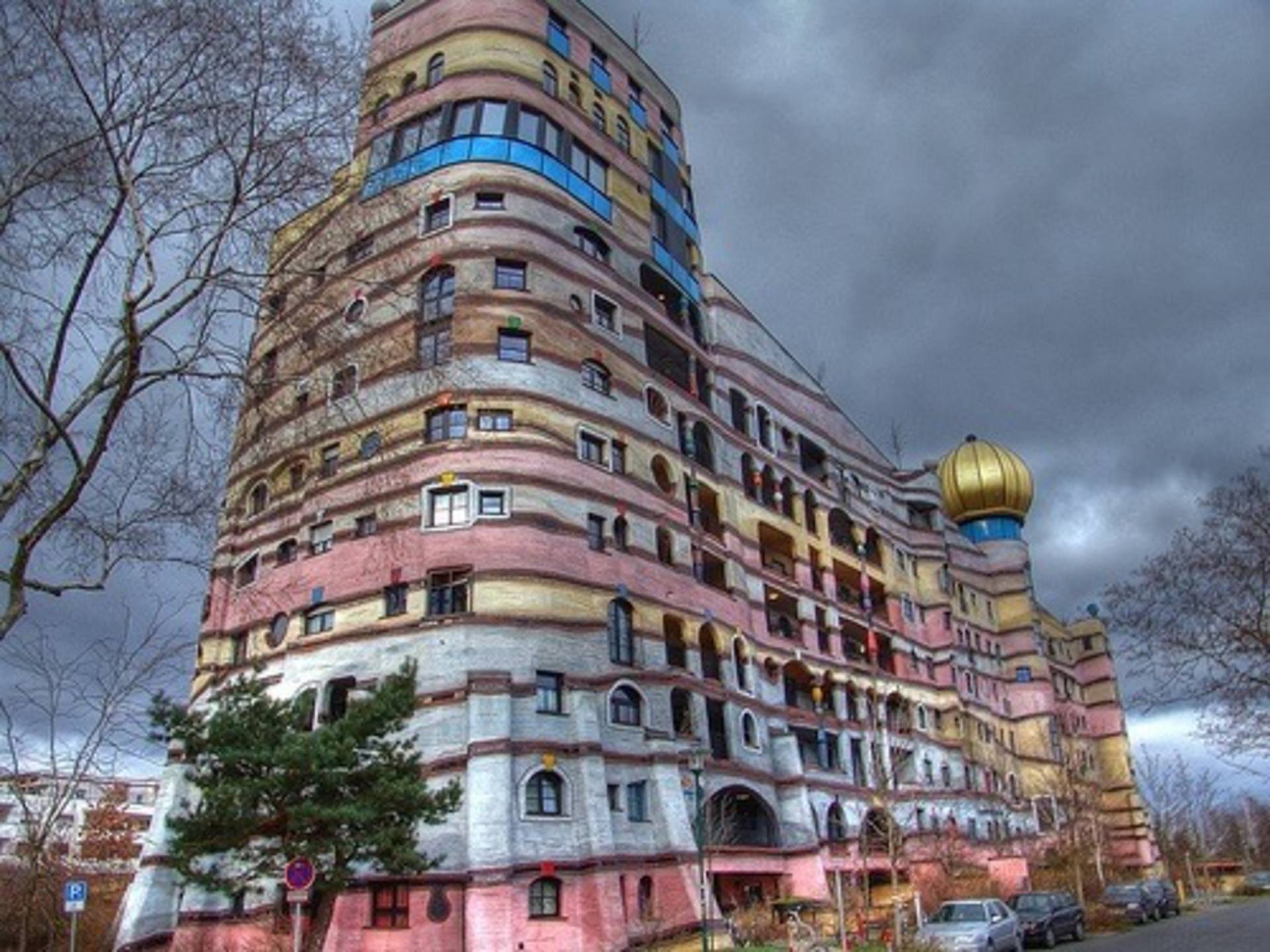
The Waldspirale is a residential building complex in Darmstadt, Germany designed by Austrian artist Friedensreich Hundertwasser, planned and implemented by architect Heinz M. Springmann, and constructed by the Bauverein Darmstadt company. Built in the 1990s, it means a forest spiral in English reflecting both the general plan of the building and its green roof.
3. The Basket Building (Ohio, United States)
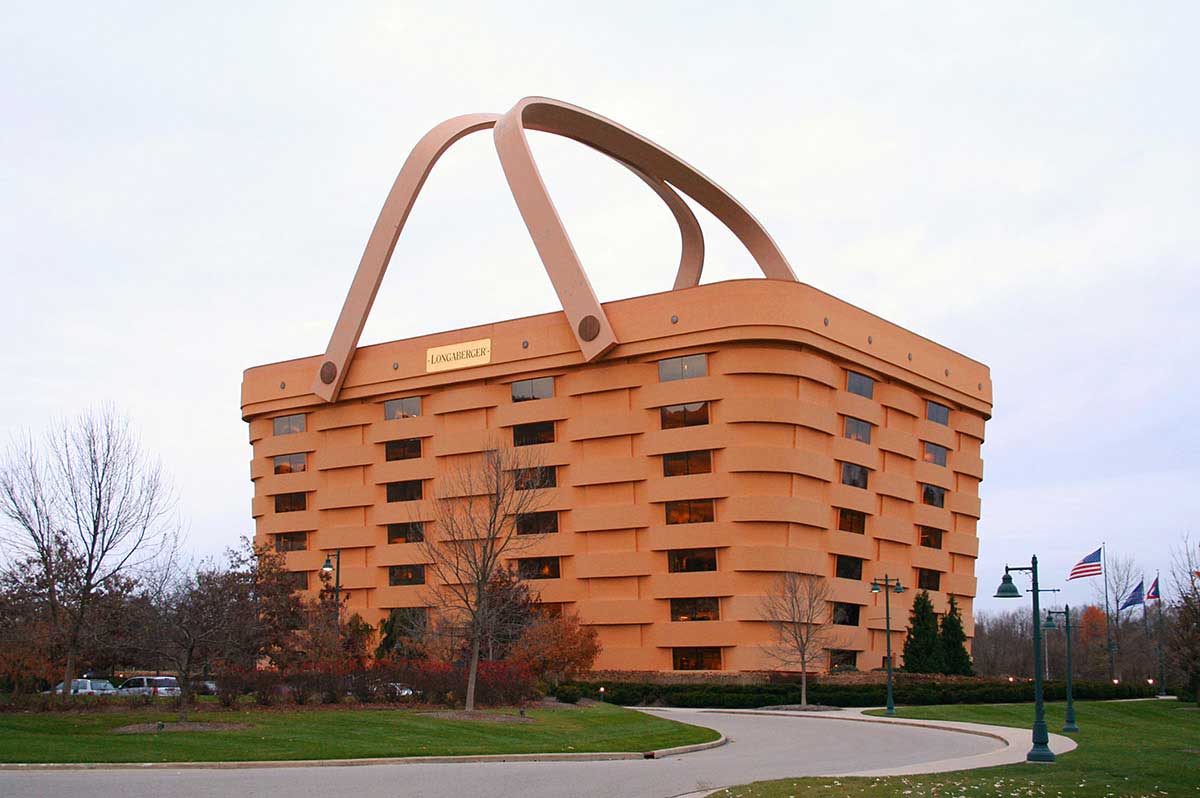
The old corporate headquarters of the Longaberger company, a family-owned and operated business, was started by Dave Longaberger in 1973 was located on Ohio's State Route 16 and is a local landmark and a well-known example of novelty architecture since it takes the shape of the company's biggest seller, the "Medium Market Basket”.
4. The Torre Galatea Figueras (Spain)
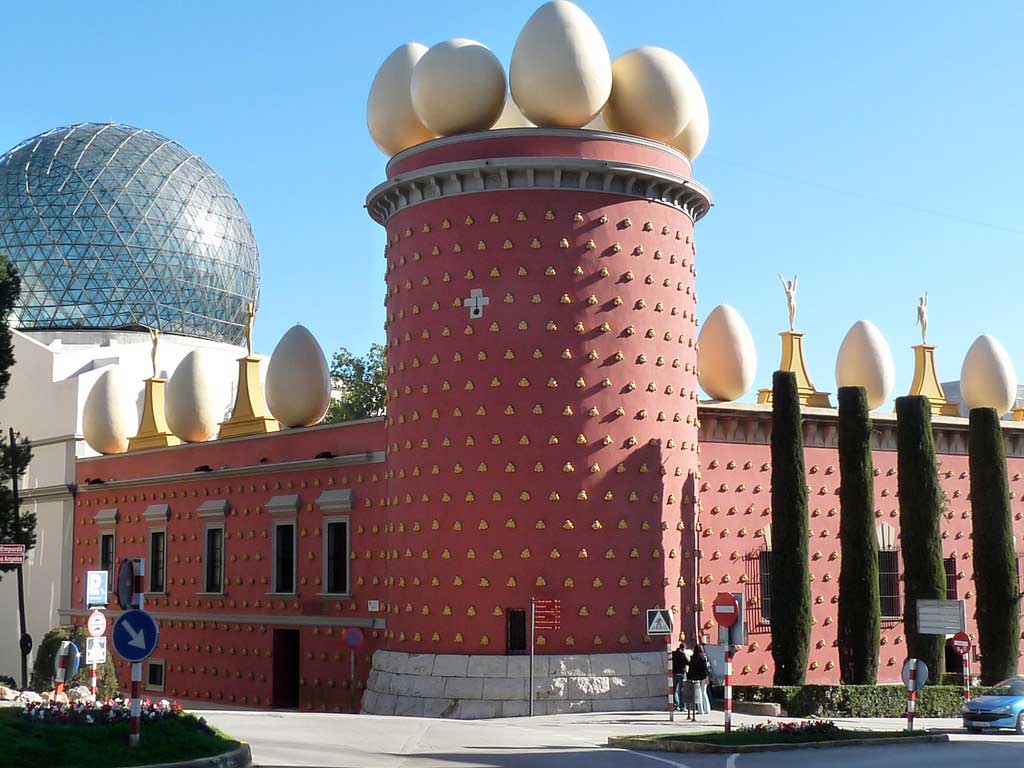
Torre Galatea, also known as Torre Gorgot serves as a museum and burial place of prominent Spanish surrealist painter Salvador Dalí, located in the city of Figueres, in the autonomous community of Catalonia, within the Kingdom of Spain. Initially the building was part of the wall that enclosed the city of Figueres, it later transformed into a reservoir for municipal water.
5. Kansas City Public Library (Missouri, United States)
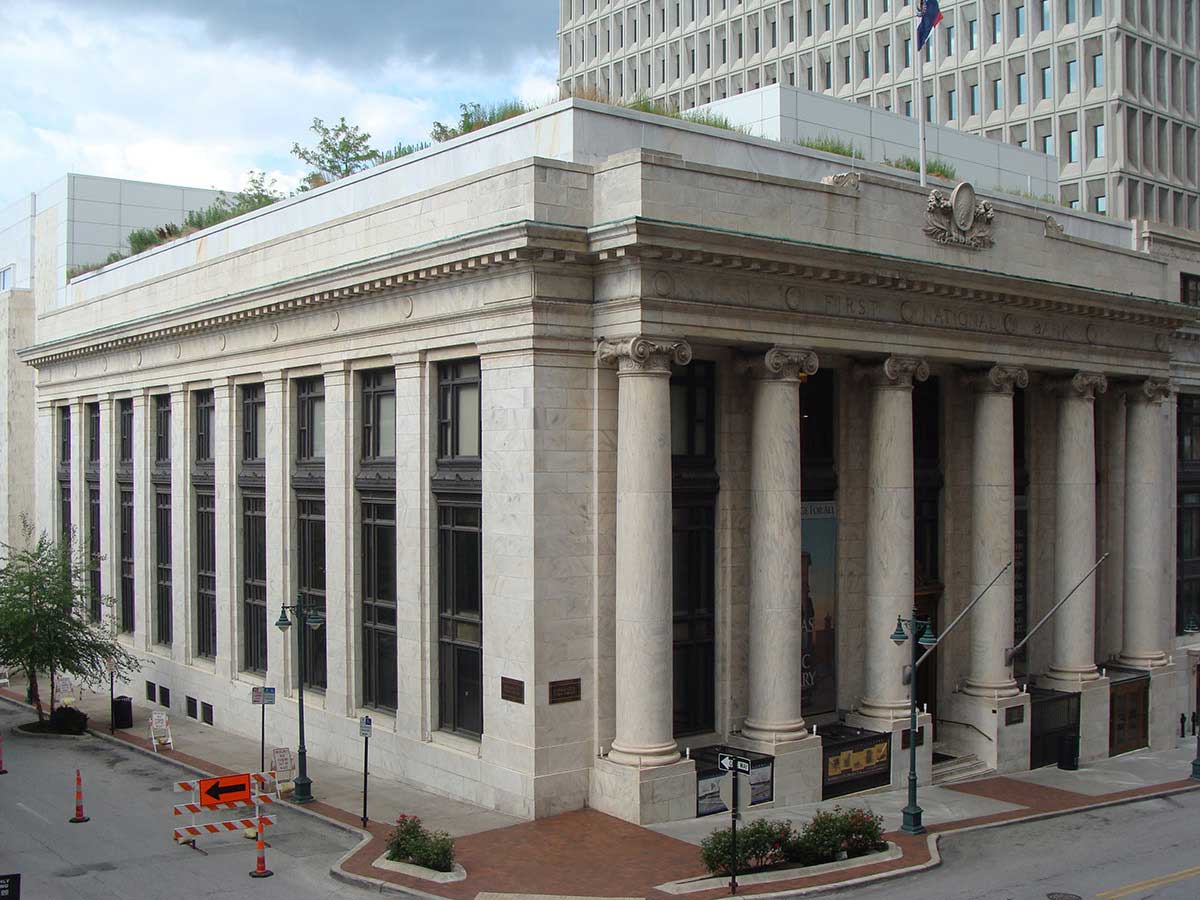
The Kansas City Public Library is a public system headquartered in the Central Library in Kansas City, Missouri. The system operates its Central Library and neighborhood branches. Founded on December 5, 1873 it is the oldest and third largest public library system in the metropolitan Kansas City area. Housed in the Central Library's Missouri Valley Room, is a special collection of Kansas City local history, including original and published materials, news articles, post cards, photographs, maps, and city directories dating from the community's earliest history.
6. Wonderworks (Pigeon Forge, TN, United States)
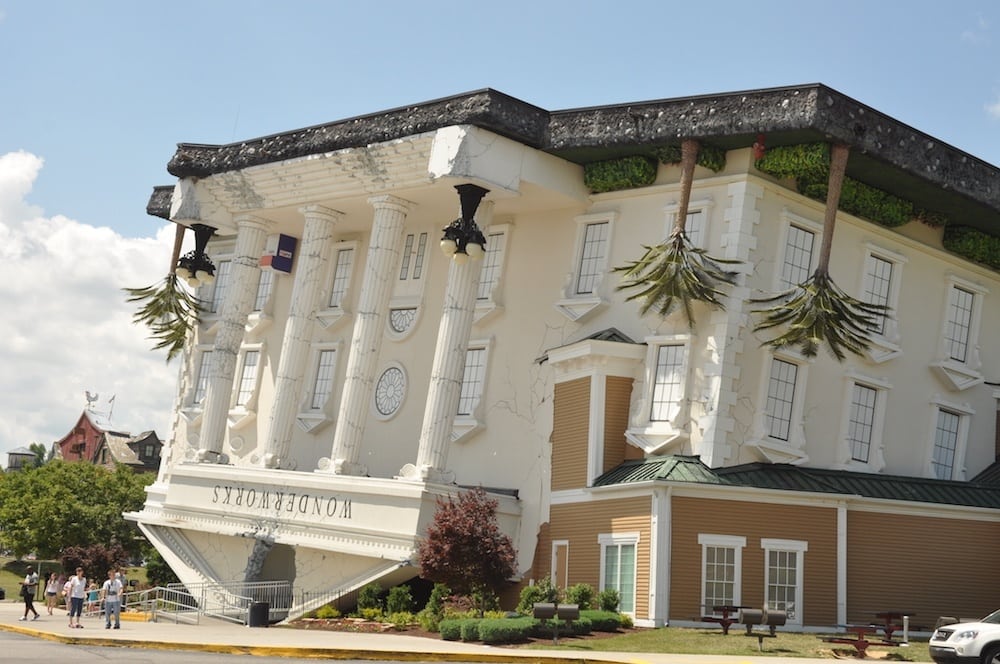
WonderWorks is an entertainment center focused on science exhibits with five locations in the United States. "Let Your Imagination Run Wild" is the company's slogan . Its buildings are commonly built as if they are upside down. The experience is considered an "edu-tainment" a combination of education and entertainment. It contains over one hundred hands on exhibits that challenges the mind and many activities for guests to explore.
7. Habitat 67 (Montreal, Canada)
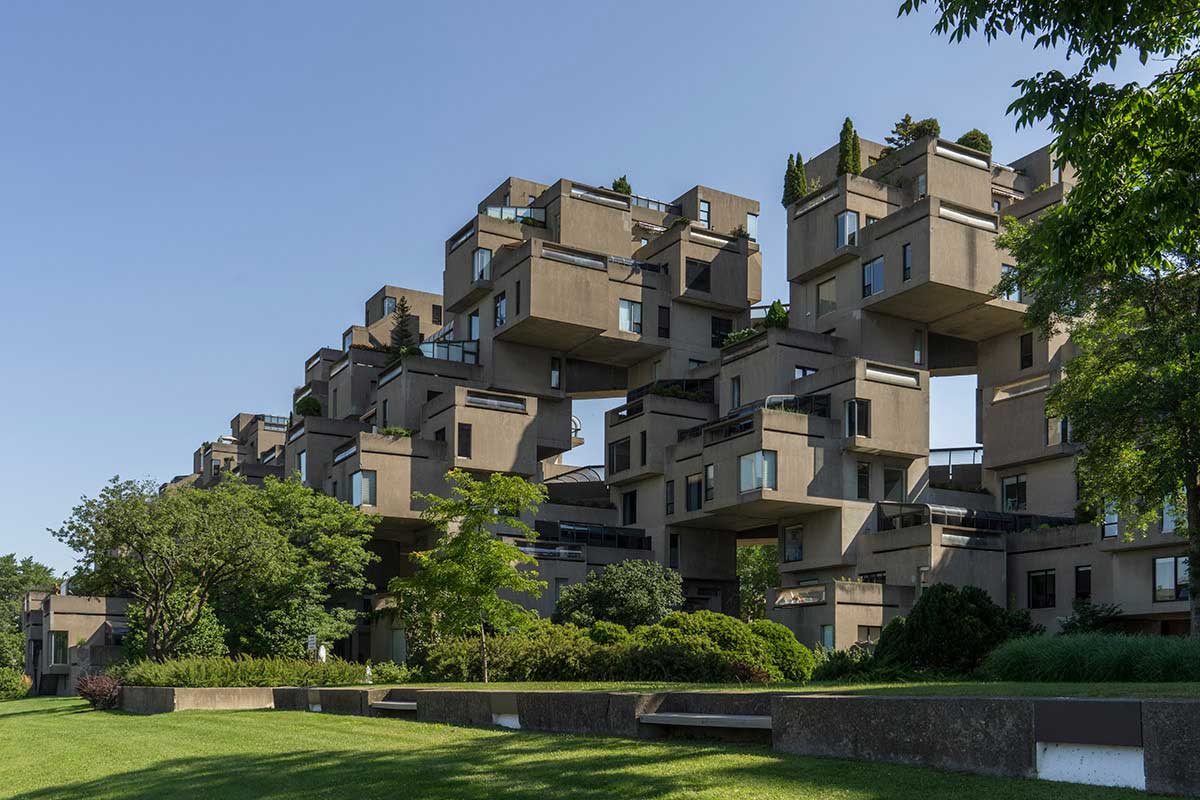
Designed by Israeli-Canadian architect Moshe Safdie and originally conceived as his master's thesis in architecture at McGill University and then built as a pavilion for Expo 67, the World's Fair held from April to October 1967 Habitat 67, or simply Habitat, is a model community and housing complex in Montreal, Quebec, Canada. It is located at 2600 Avenue Pierre-Dupuy on the Marc-Drouin Quay next to the Saint Lawrence River. Habitat 67 is widely considered an architectural landmark and one of the most recognizable and spectacular buildings in both Montreal and Canada.
8. Cubic Houses (Rotterdam, Netherlands)
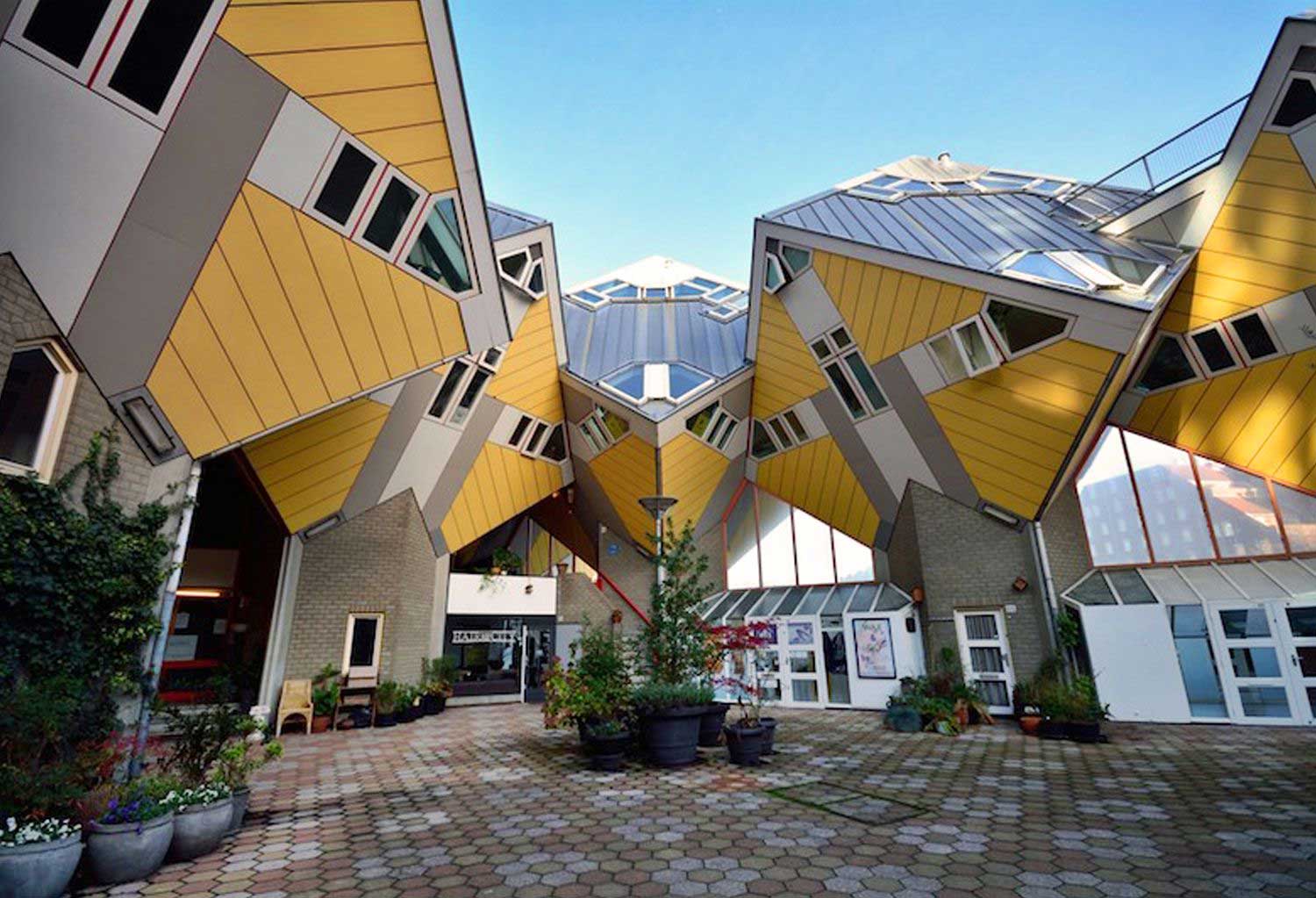
Cube houses known as Kubuswoningen in Dutch are a set of innovative houses built in Rotterdam and Helmond in the Netherlands. Architect Piet Blom designed it based on the concept of "living as an urban roof": high density housing with sufficient space on the ground level, since its main purpose is to optimise the space inside. The central idea of the cube houses around the world is mainly optimizing the space, as a house, to a better distribution of the rooms inside.
9. Hang Nga Guesthouse (Crazy House), Vietnam
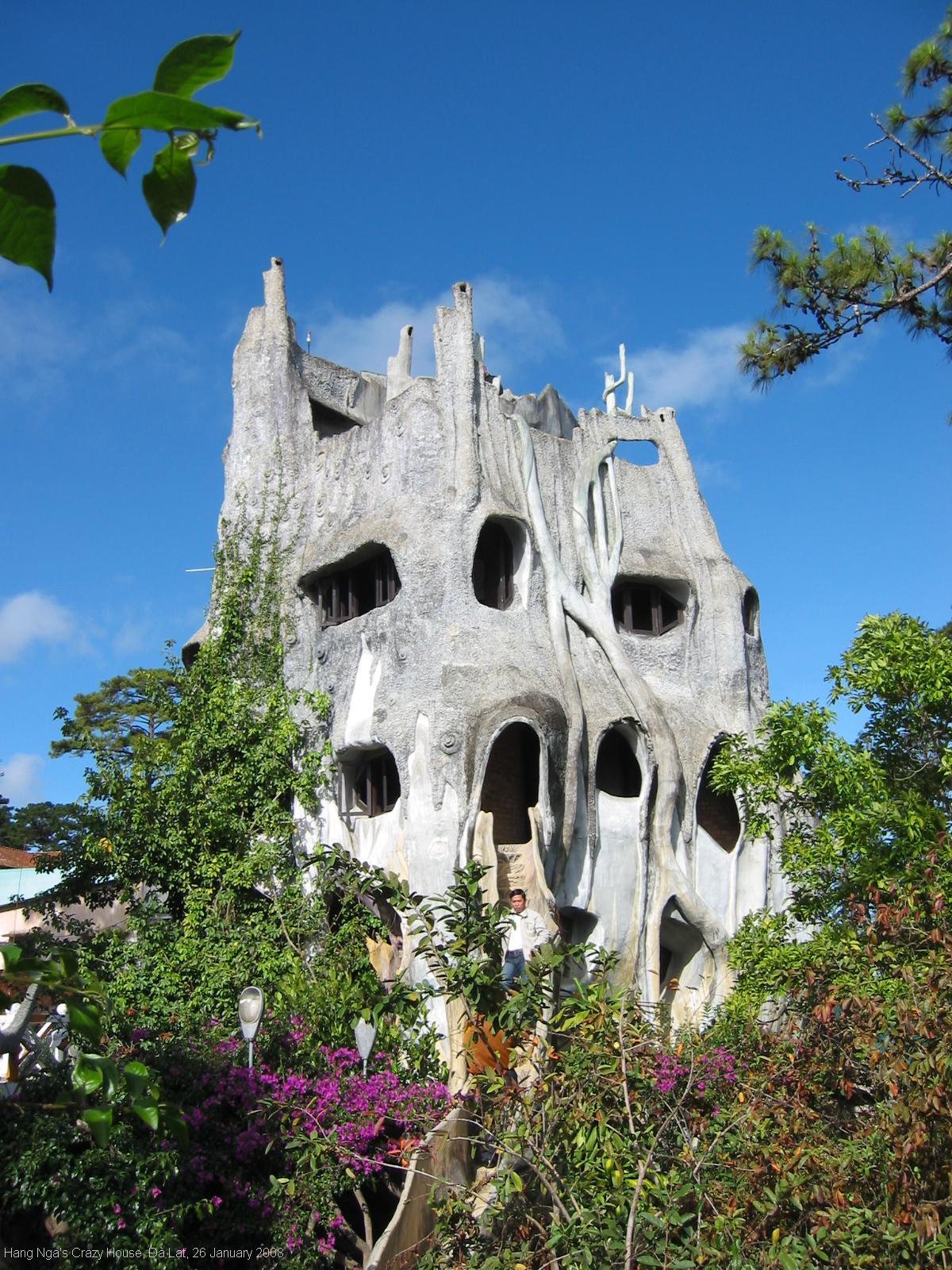
Hằng Nga guesthouse is an unconventional building designed and constructed by Vietnamese architect Đặng Việt Nga in Đà Lạt, Vietnam. It is described as a “fairy tale house” the building’s overall design resembles a giant tree, incorporating sculptured design elements representing natural forms such as animals, mushrooms, spider webs and caves. Its architecture comprises complex, organic, non-rectilinear shapes, is described as expressionist. Since its opening in 1990, the building has gained recognition for its unique architecture in numerous guidebooks and listed as one of the world’s ten most “bizarre” buildings in the Chinese People's Daily.
10. Chapel in the Rock (Arizona, United States)
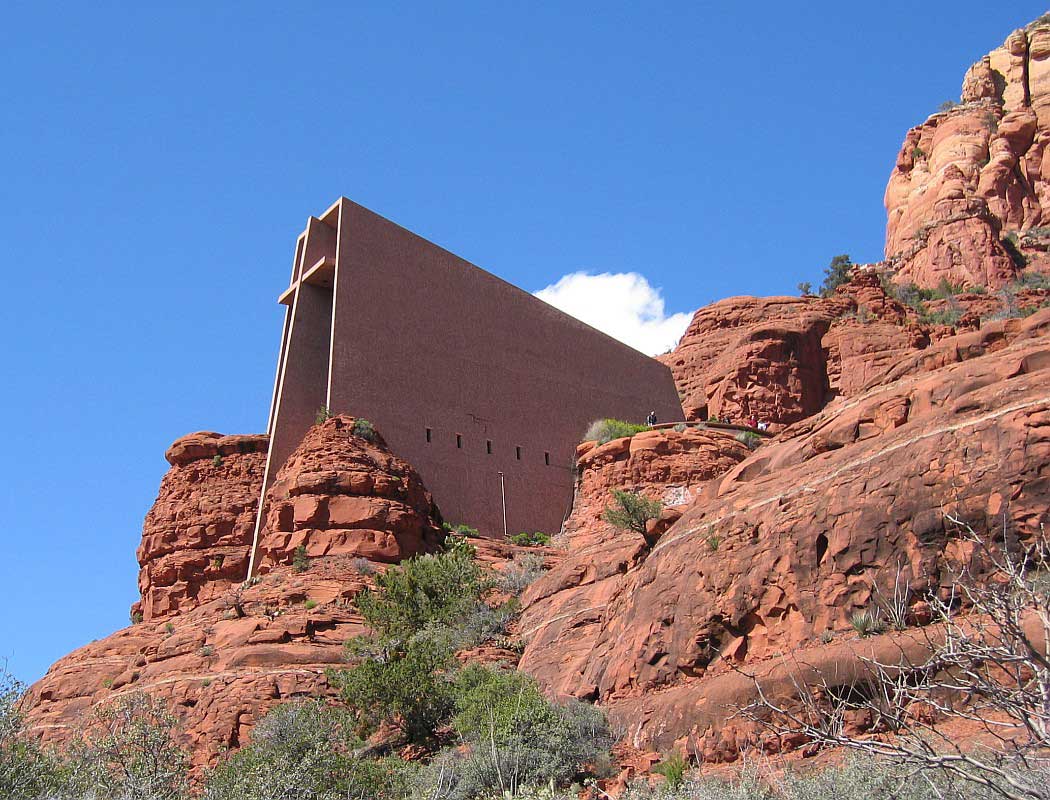
The Chapel of the Holy Cross is a Roman Catholic chapel built into the buttes of Sedona, Arizona, and is run by the Roman Catholic Diocese of Phoenix, Richard Hein was chosen as project architect, and the design was executed by architect August K. Strotz, both from the firm of Anshen & Allen. The chapel is built on Coconino National Forest land; at a cost of US$300,000. completed in 1956.[3]
11. Dancing Building (Prague, Czech Republic)
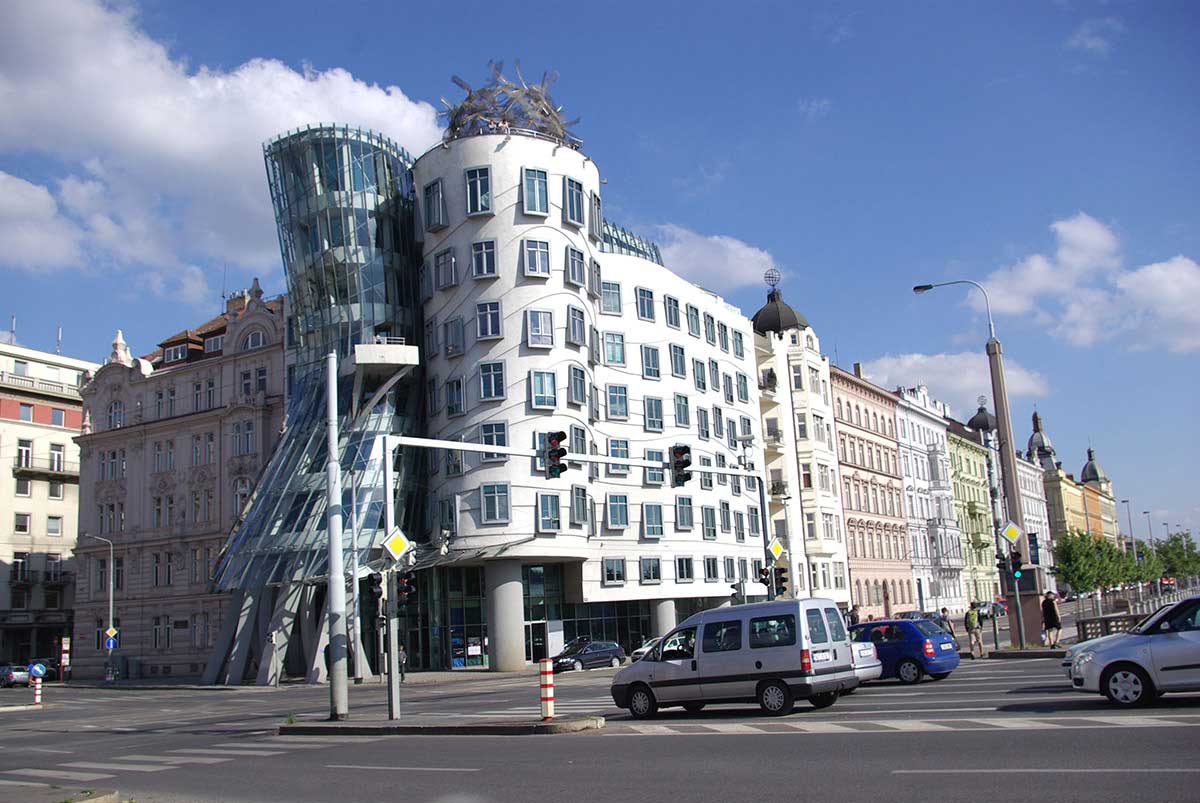
The Dancing House in Prague, Czech Republic was designed by the Croatian-Czech architect Vlado Milunić in cooperation with Canadian-American architect Frank Gehry on a vacant riverfront plot. The building was designed in 1992 and completed in 1996. The very non-traditional design was controversial at the time because the house stands out among the Baroque, Gothic and Art Nouveau buildings for which Prague is famous, and in the opinion of some it does not accord well with these architectural styles. Gehry originally named the house Fred and Ginger (after the famous dancers Fred Astaire and Ginger Rogers – the house resembles a pair of dancers)[2] but this nickname is now rarely used.







